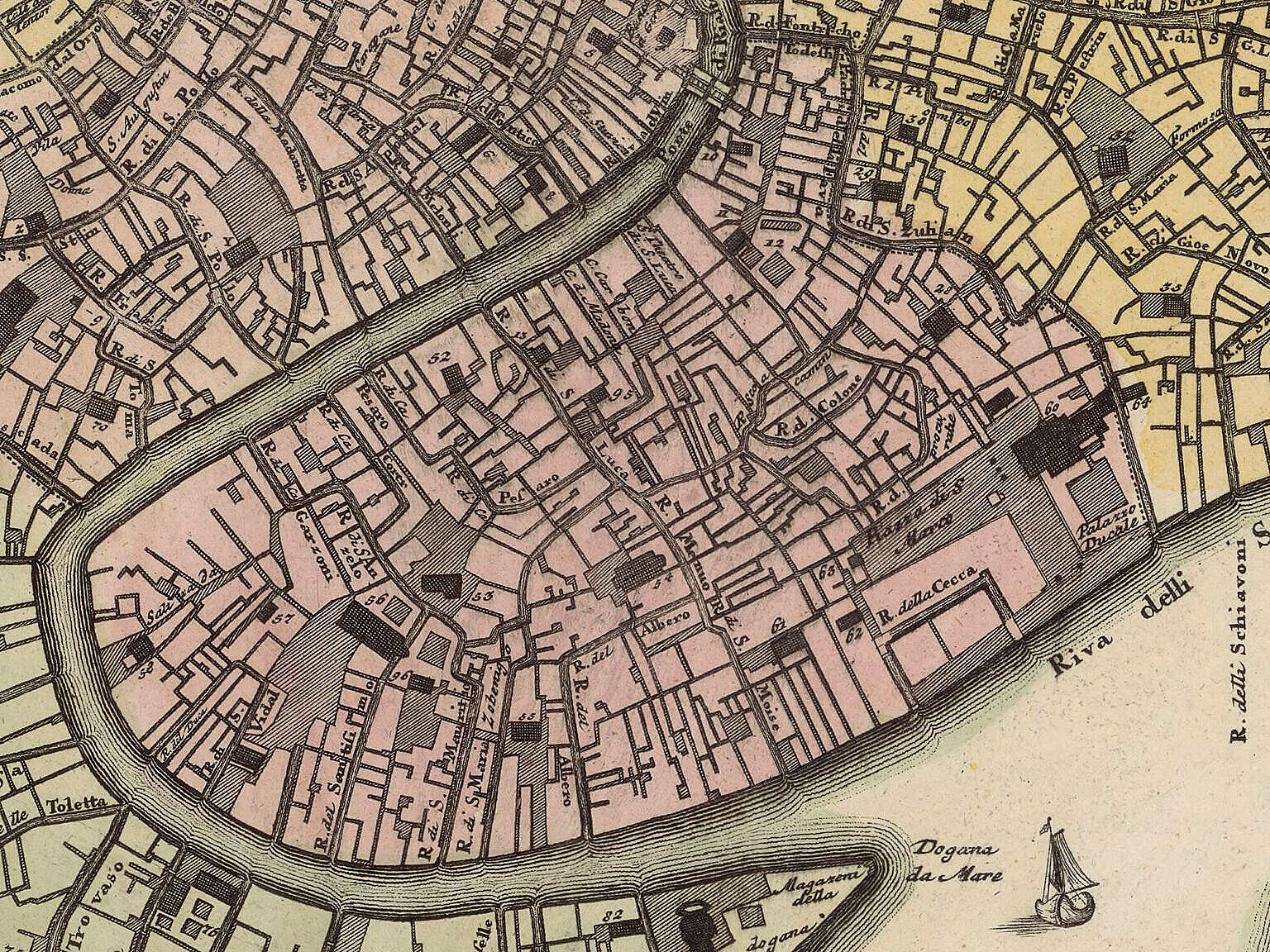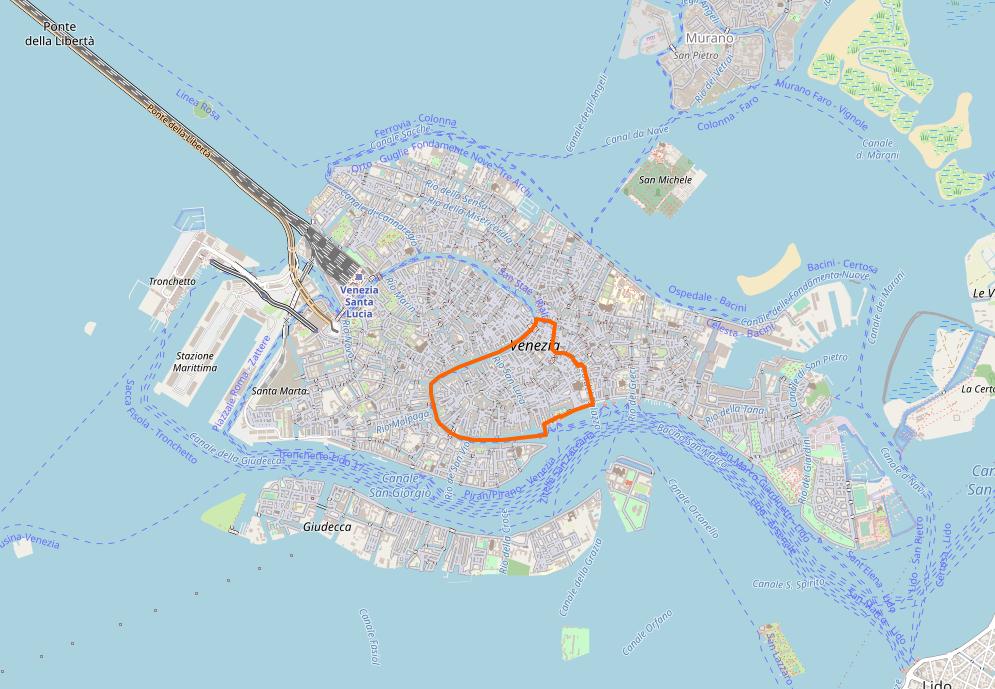The Sestiere San Marco is the central part of the city, bounded by the Grand Canal on three sides and a line from the Rialto to the Doge’s Palace on the last. It is one of the smallest of the sestieri, but probably the most important.
The vicinity to the economic centre at Rialto and the political centre at St Mark’s made this the absolutely most prestigious of the six sestieri.
The name San Marco
The name is obviously from the presence of the relics of St Mark in the Basilica di San Marco.
The relics of St Mark arrived in Venice in 828, so what was the area called before? We don’t know. In fact, we don’t even know who instituted for formal organisation of the sestieri, and when they did it.
Tassini, in his Curiosità Veneziane, mentions the doges as the ‘founders’ of the sestieri: Agnello Partecipazio (811-827), Domenico Morosini (1148-1156) or Vitale Michiel II (1156-1172).
The Doge and government
The dominant feature of the Sestiere San Marco was the presence of the government in almost all its forms.
Practically all the important institutions of the Venetian state were around Piazza San Marco, in the Palazzo Ducale and in office buildings of the Procuratie Vecchie and Procuratie Nuove, which flank the piazza on both sides.
The Grand Canal

The Sestiere San Marco has the Grand Canal on three sides, which amount to one side of about half the length of the Canalazzo.
The Canale Grande was the main street of Venice, and it was where everybody who mattered wanted to be. All the main families of Venice, both noble and cittadini, would have a palace facing the Canal Grande, if they could afford it.
Having that palace on the Grand Canal and in the Sestiere San Marco, in close proximity of the government and central administration, made this part very attractive.
After the Republic
The area around Piazza San Marco lost its role as centre of the Venetian government with the the fall of the republic, but it remained the seat of power. The Palazzo Ducale and the Basilica di San Marco were subsequently used by the French, the Austrians and the Italians alike for displays of power and for representation.
With modern mass tourism, Sestiere San Marco with its location between the Rialto and St Mark’s, gets its part of the problems.
It is unimaginable visiting Venice without seeing the Palazzo Ducale and the Basilica di San Marco, and the closest Venice has to a national museum, the Museo Correr, is also in the Piazza.
Churches in San Marco
Consecrated
- Chiesa di San Bartolomio
- Chiesa di San Basso
- Chiesa di San Beneto
- Chiesa di Santa Croce degli Armeni
- Chiesa di San Fantin
- Chiesa di San Gallo
- Chiesa di San Luca
- Basilica di San Marco
- Chiesa di Santa Maria del Giglio
- Chiesa di San Moisè
- Chiesa di San Salvador
- Chiesa di San Samuele
- Chiesa di Santo Stefano
- Chiesa di San Teodoro
- Chiesa di San Vidal
- Chiesa di San Zulian
Deconsecrated
- Chiesa di San Maurizio
- Chiesa dei Santi Rocco e Margherita
Demolished
- Chiesa di Sant’Angelo
- Chiesa dell’Ascensione
- Chiesa di San Geminiano
- Chiesa di San Paternian


Leave a Reply